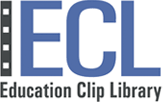-
Remote Learning Realities: Adapting to the New Normal in Education
The educational landscape has undergone a transformative shift in recent years, marked by the widespread adoption of remote learning. This paradigm shift, spurred by technological advancements and global events, has redefined the way high school students experience education. In this exploration, we delve into the definition and rise of remote learning, understanding its roots and the challenges and opportunities it presents.
Amidst this educational evolution, tools like Edulegit.com have emerged to address the unique demands of remote learning. Edulegit.com, a classroom computer monitoring software, is specifically designed for assignment evaluation. Its unique selling points include automated checking of student papers for plagiarism and AI-generated content, monitoring students' approach to their responsibilities, reducing time spent by educators on assessing papers, and providing alerts for plagiarized content and AI-generated content. This tool is tailored to meet the needs of educators and teaching staff in educational institutions.
Embracing Remote Learning Benefits
Flexibility and Customized Learning
One of the remarkable advantages of remote learning lies in its ability to offer flexibility in education. No longer bound by rigid schedules, high school students can tailor their learning experience to suit their individual needs. This adaptability empowers students to explore topics at their own pace, fostering a sense of autonomy and ownership over their education.
Inclusivity and Breaking Geographical Barriers
Remote learning has effectively dismantled geographical barriers that once limited educational opportunities. Students from diverse backgrounds can now access quality education without the constraints of physical location. This inclusivity not only enriches the learning environment but also promotes a global perspective, preparing students for an interconnected world.
Technological Integration and Digital Skills Development
The integration of technology into the educational sphere is a cornerstone of remote learning. High school students are not merely consumers but active participants in the digital landscape. Engaging with technology cultivates essential digital skills, preparing students for the demands of the modern workforce. This technological fluency becomes a valuable asset in an era dominated by digital innovation.
Navigating Challenges
Technical Hurdles: Internet and Device Issues
However, the transition to remote learning is not without its challenges. Many students grapple with technical hurdles, ranging from unstable internet connections to limited access to devices. Addressing these challenges requires collaboration between educators, students, and institutions to ensure equitable access to educational resources.
Social and Emotional Impact: Coping with Isolation
The digital nature of remote learning can sometimes lead to feelings of isolation among students. The absence of face-to-face interactions can impact social dynamics and emotional well-being. Recognizing and addressing these challenges is vital for maintaining a supportive and enriching learning environment.
Adapting to Virtual Classrooms and Different Teaching Styles
Moreover, adapting to virtual classrooms requires a shift in mindset. High school students must navigate different teaching styles and methods of engagement. Flexibility and open communication between students and educators become key elements in overcoming these challenges and ensuring a positive remote learning experience.
Strategies for Success
Time Management and Structured Schedules
To thrive in a remote learning environment, effective time management is crucial. Creating structured schedules helps students strike a balance between academic responsibilities and personal time. This skill not only enhances productivity but also promotes a healthy work-life balance.
Productive Learning Environment and Minimizing Distractions
Establishing a conducive learning environment is equally essential. Minimizing distractions and dedicating a specific space for studying fosters concentration and engagement. By curating a productive learning environment, high school students can optimize their remote learning experience.
Effective Communication and Building Virtual Support
Remote learning emphasizes the importance of effective communication. Building a virtual support system, comprising peers, educators, and support staff, creates a sense of community. Regular communication channels, whether through virtual meetings or collaborative online platforms, strengthen connections within the remote learning community.
Future Implications
Blended Learning Models
Looking ahead, the future of education appears to embrace blended learning models. The integration of both in-person and online instruction offers a holistic approach, combining the benefits of face-to-face interactions with the flexibility of remote learning. High school students can anticipate a dynamic and personalized learning experience.
Evolution of Educational Technology
The evolution of educational technology continues to shape the educational landscape. Emerging trends in EdTech, including artificial intelligence, promise innovative solutions for personalized learning and assessment. High school students stand at the forefront of this technological evolution, preparing to navigate an increasingly digital educational terrain.
Conclusion
In concluding our exploration of remote learning realities, it's evident that adaptation is the key to success in the new normal of education. High school students, equipped with resilience and the right strategies, can not only overcome the challenges posed by remote learning but also thrive in an environment that fosters flexibility, inclusivity, and technological fluency. As we navigate this educational frontier, let's embrace the opportunities it presents for personal and academic growth, ensuring a future-ready generation of learners.



